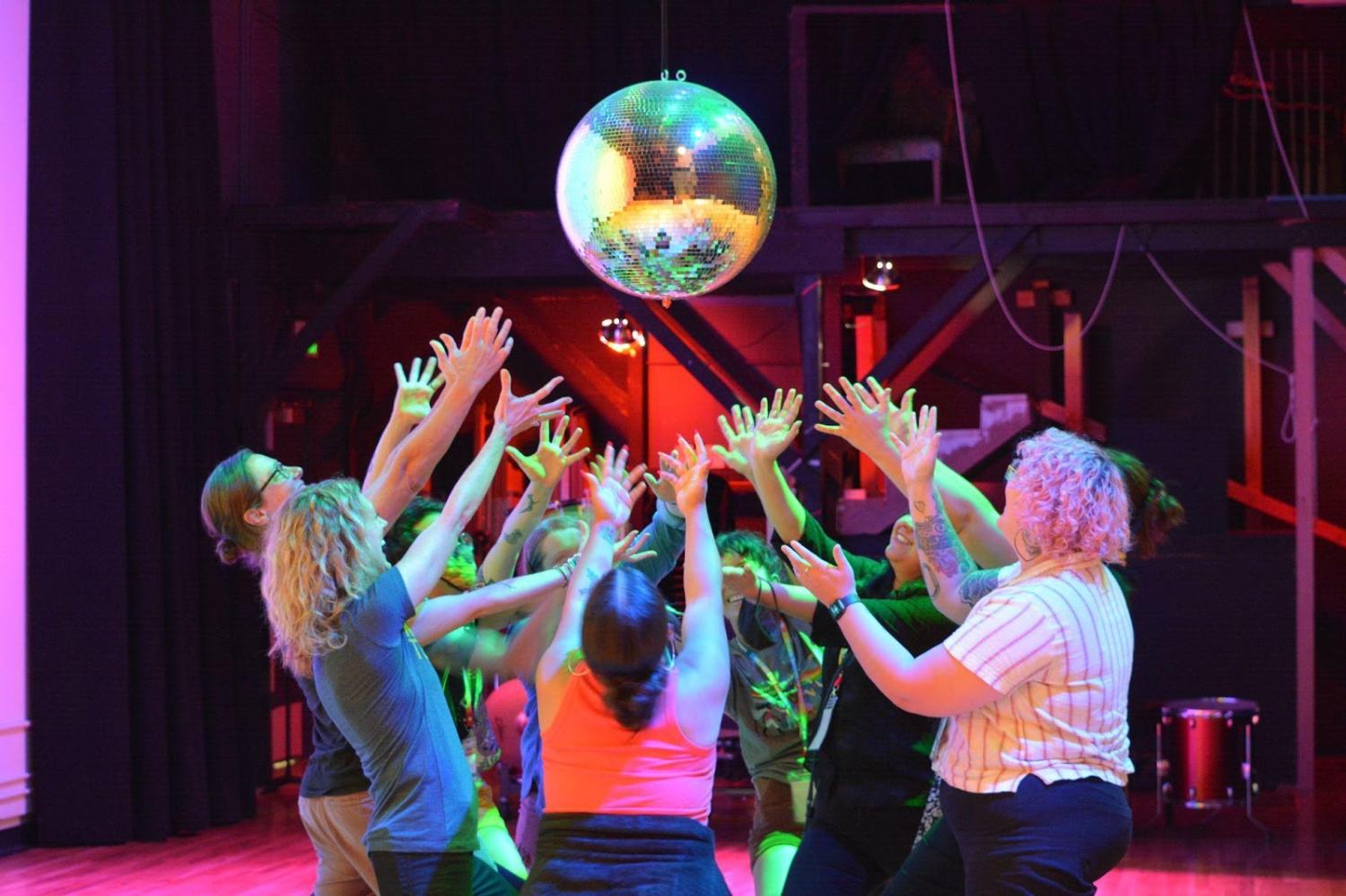Co-designing Educator Spaces for Collective Liberation: A Photographic Essay
Robyn Tomiko (she/her) is a PhD student at CU Boulder and a graduate research assistant with A Queer Endeavor. After teaching middle school English for several years in Texas, Robyn is enjoying the privilege of learning more about creating humanizing and equitable educational experiences for public school students.
Page Regan (they/ them) centers BIPOC transgender and non-binary young people in their research. Page sees spaces of learning as sites for growth and resistance, where through radical self-acceptance, critical consciousness and brave dialogue we can collectively live into a queer, loving future. Family time and adventures outside bring them deep joy.
Kachine Kulick (she/her) is a doctoral candidate in Teacher, Learning, Research and Practice (TLRP). Her research interests are rooted in centering anti-racism through queering teacher learning environments. Her pedagogy focuses on not just intellectualizing anti-racism, but also, an embodiment of practices towards self and collective healing. As a human, Kachine likes to ride her bike while blasting jams, forage plants in the forest, and sit with her ancestors.
María J. Ruíz-Martínez (she/her) is a PhD candidate in Equity, Bilingualism & Biliteracy at the University of Colorado Boulder. She is interested in how translingual people teach and learn across home, school, and community contexts by examining how race and the interrelated categories of sexuality, gender, class, indigeneity, ethnicity, dis/ability, and legal status impact these endeavors. María’s experience as an educator and lived experiences in Milwaukee, Wisconsin, inform her belief that education is a relational practice of imagination, liberation, and social change.
See: https://creativecommons.org/licenses/by/4.0/
Abstract
This photographic essay features pictures and short reflections from members of the Educator Institute for Equity and Justice team. These photographs and reflections represent the intentionally designed spaces at the institute.
Co-designing Educator Spaces for Collective Liberation: A Photographic Essay
Visual images enable us to convey meaning, elicit emotions, and communicate stories in unbounded and playful ways. The collection of photographs from the Queer Endeavor’s annual 2021 Educator Institute for Equity and Justice represent the story of our collective thinking and hopeful imaginings for generative learning spaces. From designing collective reflections during workshops to playing in maker-spaces to debriefing in “meet in the middle” sessions to dreaming up possibilities during a teacher’s lounge keynote, we designed opportunities for participants (and for ourselves) to grapple with moving toward collective liberation as intersectional work that requires learning, acting, and growing together, in community, rather than in silos. We offer the following photographs, accompanied with authors’ reflections, as a joyful representation of our communal effort to queer learning spaces for educators.
by Robyn Tomiko(she/her)
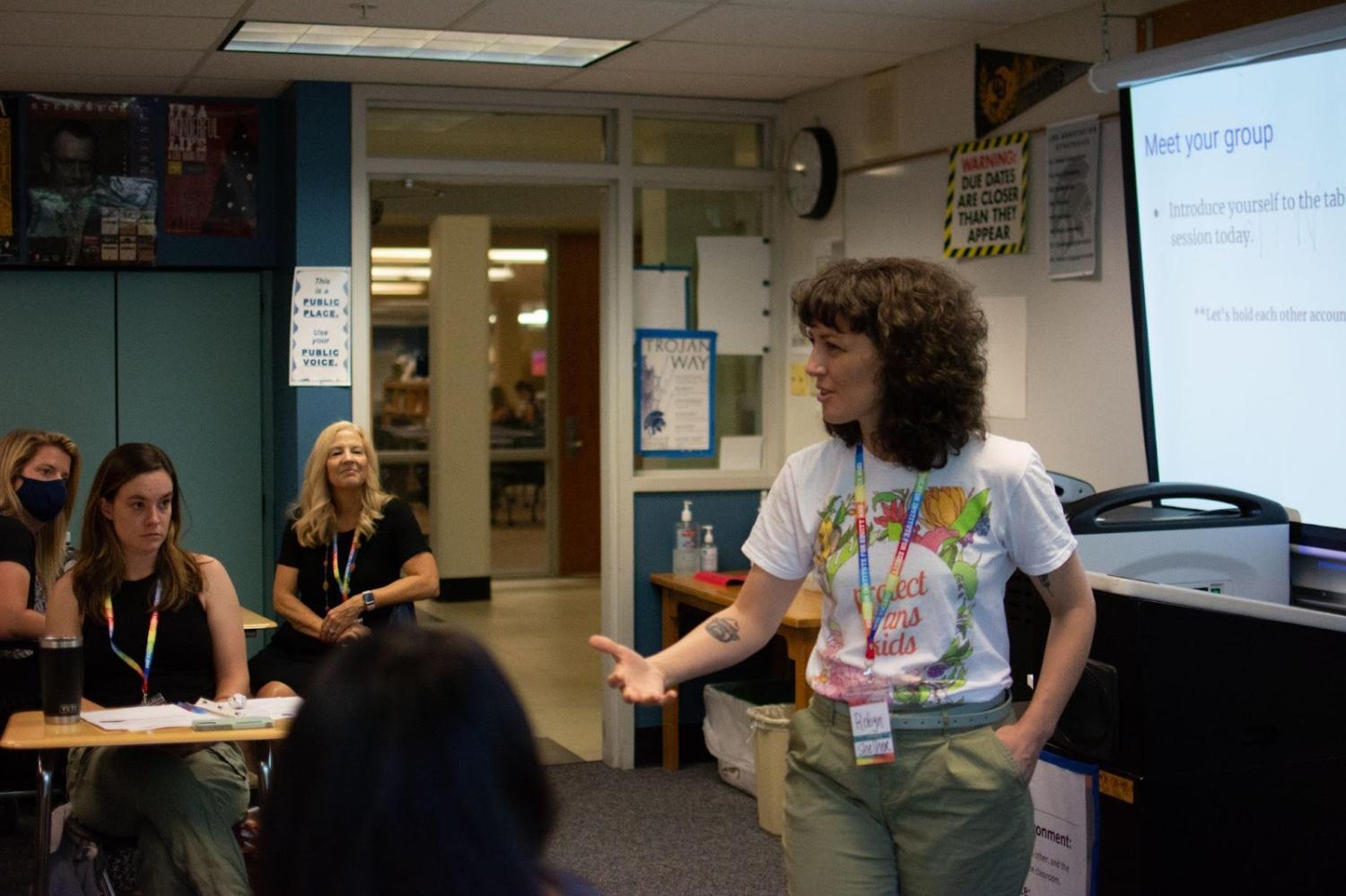
^Robyn leading the session “My Privilege and My Classroom.”
Co-creating classroom space for middle school students has always been easier for me than co-creating adult learning spaces. As we get older, more settled in our ways, more weary of the chaos that can come of an unstructured classroom, we show up to conference sessions ready to sit, listen, and maybe zone out. To counter our grown-up apathy, I try to build spaces that invite vulnerability, safekeeping of our collective risk-taking, and sincere listening. I always ask difficult questions in my classroom, so I try to soften the path to reflecting and truly answering. I can say, without a doubt, the educators in this session (My Privilege and My Classroom) embraced the opportunity to challenge themselves and their practices. It was a pleasure to learn alongside these folks.
by Page Regan (they/them)
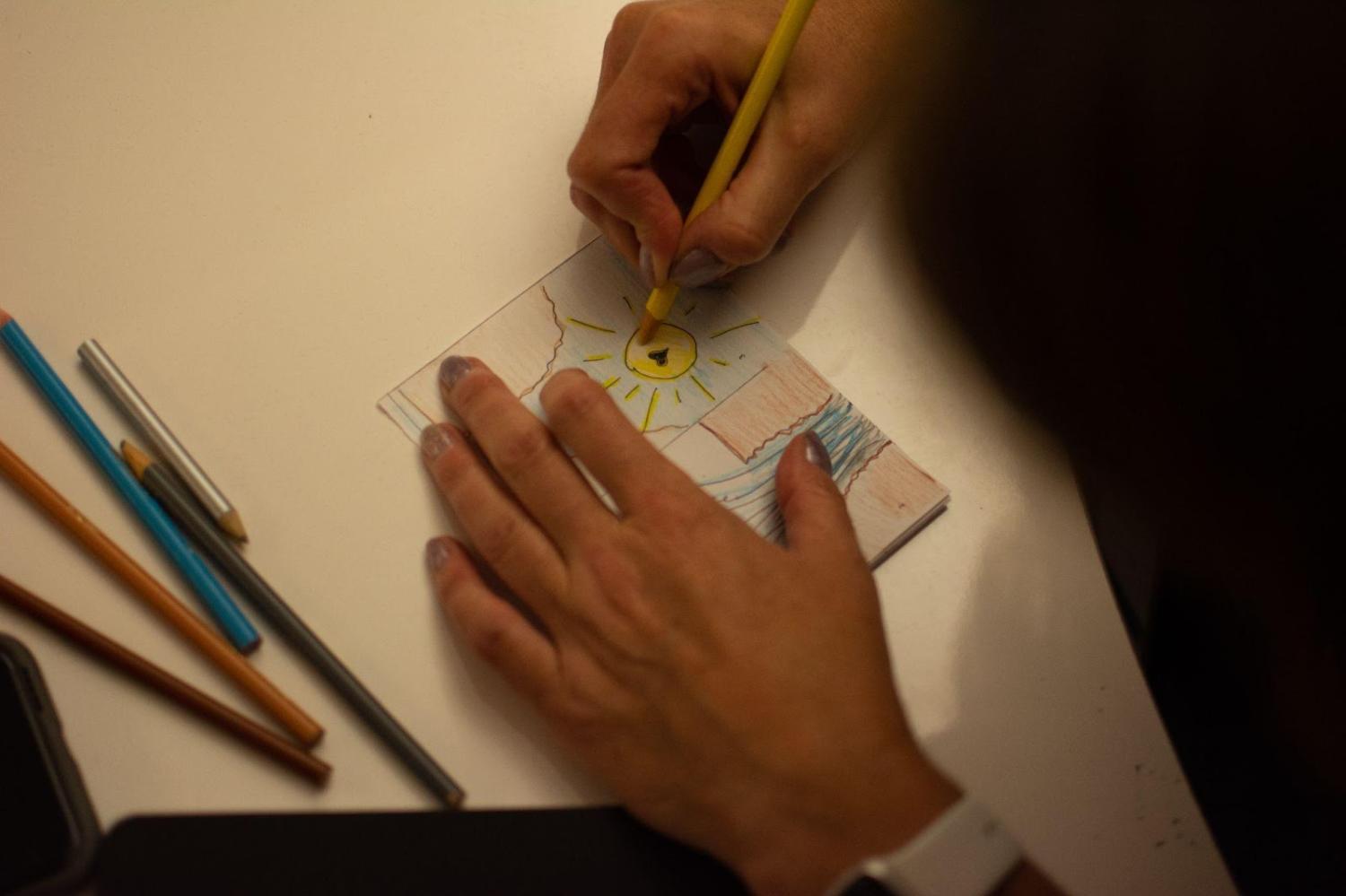
^A teacher’s zine in the meet-in-the-middle maker space.
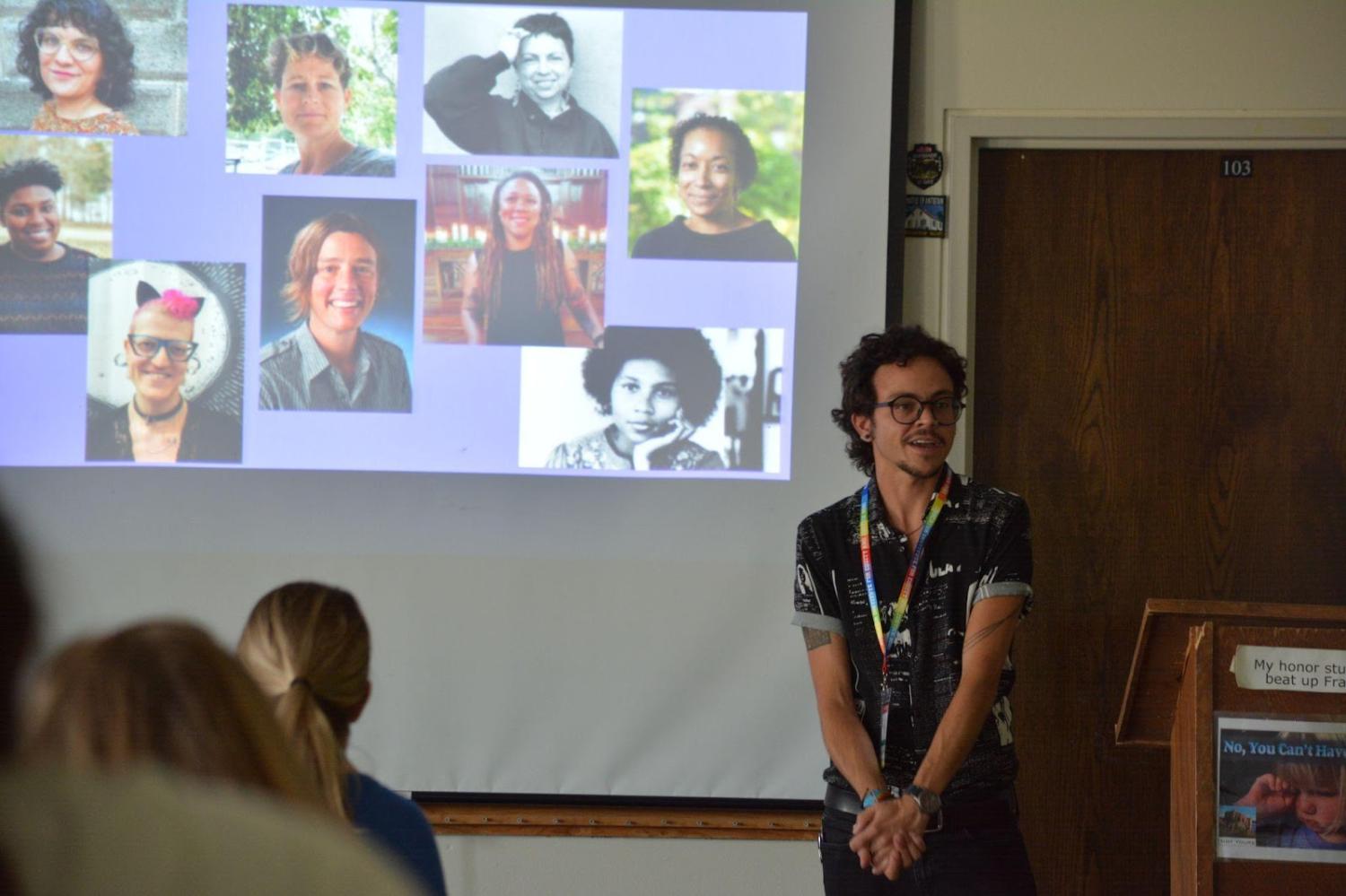
^Page bridging research and practice with some of their own frameworks in the background.
When I think of collective liberation, I think of collaboration, creativity, imaginative potential, and the intentional cultivation of spaces to harness these elements. When I think of the importance of university partnerships and institutes centered on educator learning, I value opportunities to put research into practice and share experiences. At the institute, I gratefully embraced opportunities to engage all of this. From the start, I think our whole team honored and valued the important and just pedagogies and practices the educators present are enacting already. I wanted to elevate this wisdom in the workshop I facilitated and in the meet-in-the-middle maker space I co-created with Robyn Tomiko.
In my workshop, I wore my researcher hat as I engaged in dialogue with educators about how we are thinking about gender and particularly transgender students in our contexts and classrooms. I invited folks to consider the findings of a systematic literature review from education research I co-conducted with Dr. Elizabeth Meyer about the experiences of transgender students in K-12 settings. I hope that participants feel like they were able to make sense of this research through their own, important lenses. We considered how frameworks can span the wisdom of our elders and family members to the rich theoretical frames evolving from lineages of scholars and activists across disciplines.
In our maker space, we invited participants to create zines in order to visualize and elevate institute themes, queries, and their own sense-making. For those who aren’t familiar, zines, short for magazines, have a long history of serving as an accessible, free form of publication. They come in a variety of sizes and formats and serve as an entryway for widespread consciousness raising, at little cost. Zine’s are an example in action of people power, and the creative potential of community.
by Kachine Kulick (she/her)
Entry 1: Collective Effort
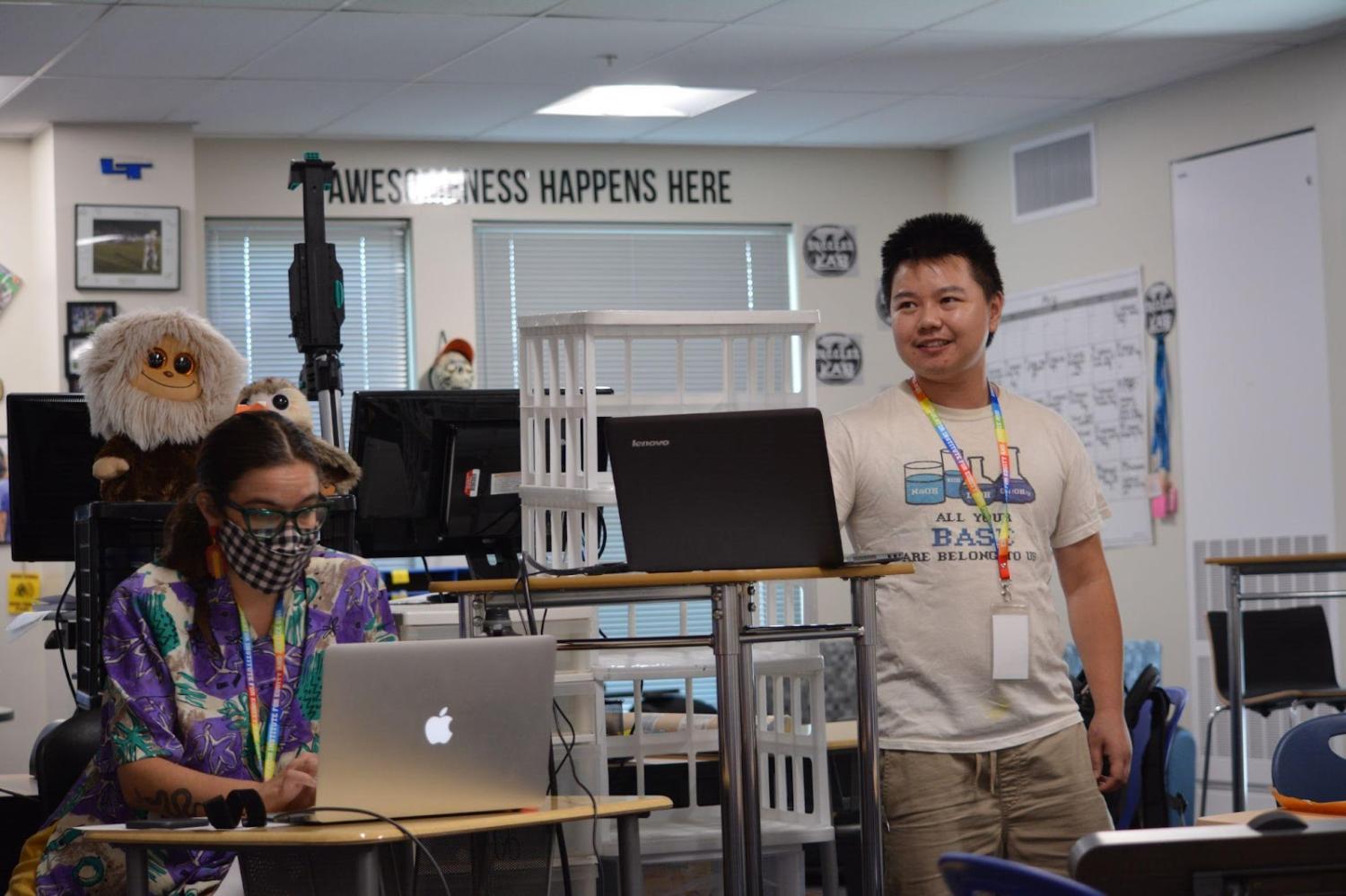
^Kachine supporting a presenter, Sam Long, in a session on Saturday of the institute
As a member of the EIEJ team, we met weekly to vision, co-conspire, and design the EIEJ conference. Outside of our weekly meetings that set the larger conference vision and design, we were also creating our own workshops, spaces to meet in the middle at the end of the day, contacting community businesses, and the day before we met to stuff goodie bags that went out to each EIEJ participant. As a collective, we had our hands, hearts, minds in the whole process. The picture above was on the day that I was on a panel in the morning, supporting presenters in workshops like moving the camera for the folks online, changing slides for folks on zoom because the conference was hybrid, and facilitating a meet-in-the-middle space on embodiment to end the day. This work for us wasn’t a burden, but did require that we be truly “in it” with all the participants; a grassroots effort where hierarchies were dissolved in order to build solidarity across boundaries.
Entry 2: Sensory Space
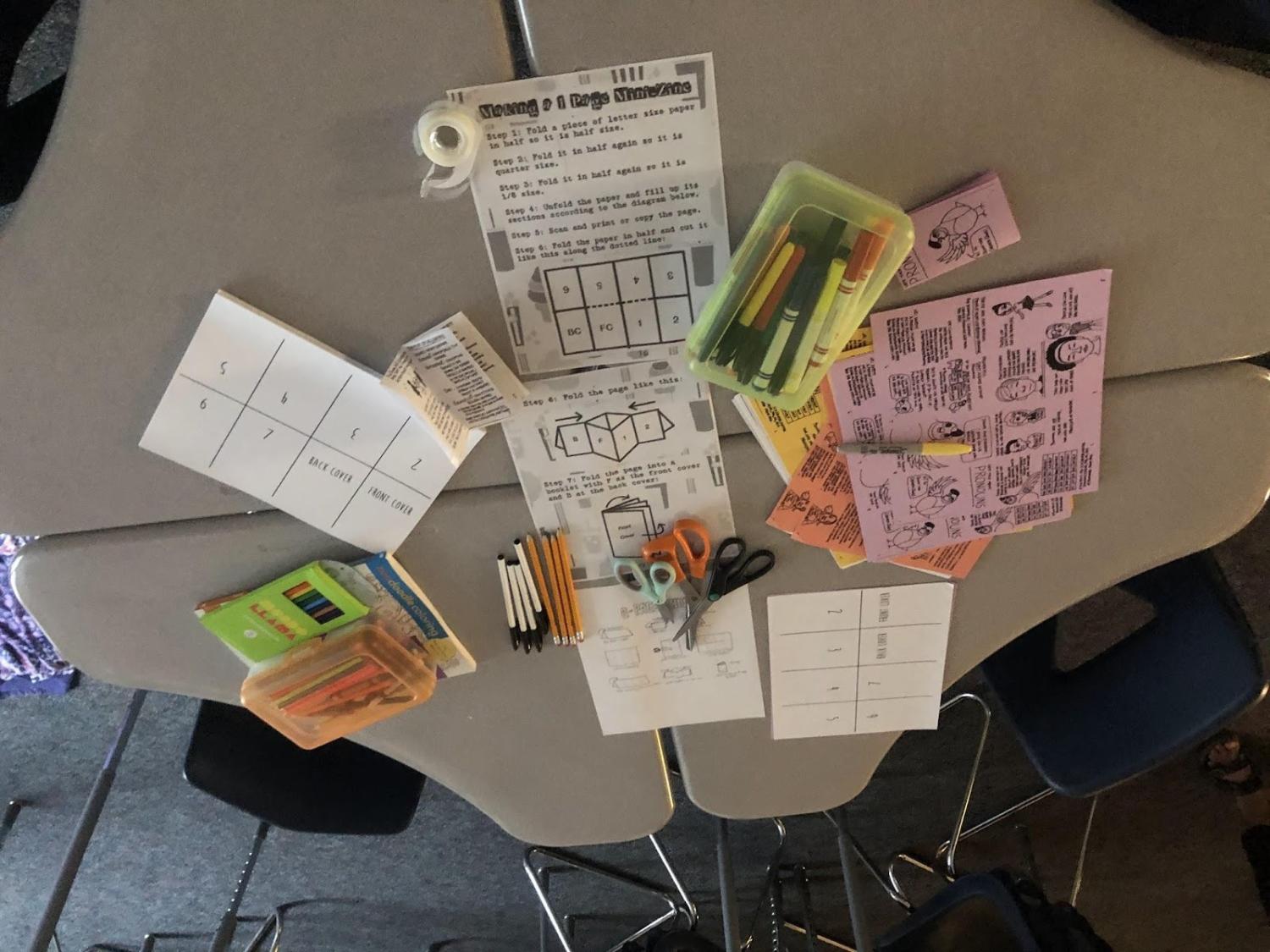
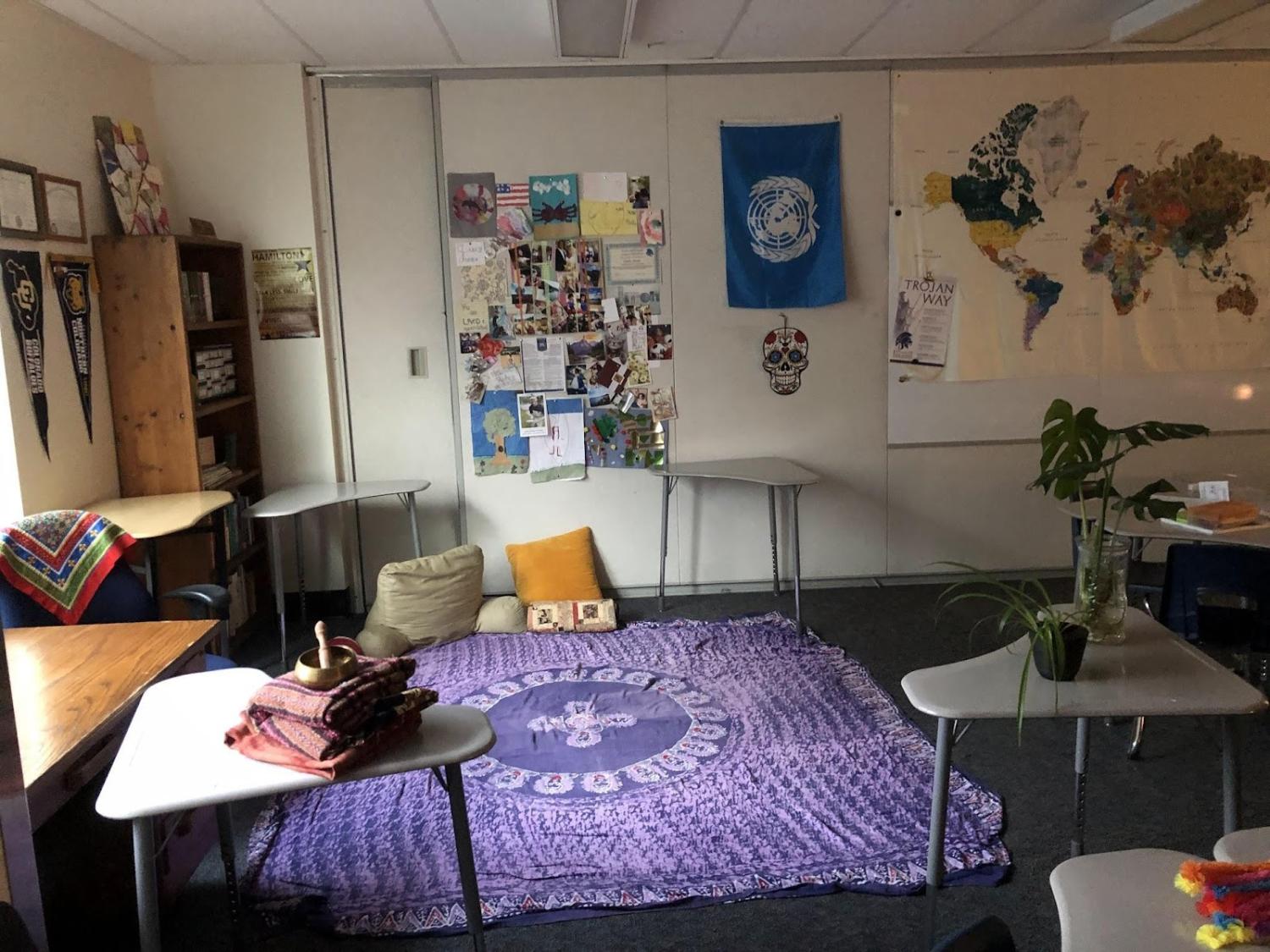
^Pictures captured from the sensory, maker-space
With so much learning and sharing going on, conferences can create potential sensory and mental-overload. Furthermore, we wanted to provide everyone with a space to take a little break and use our sensory, maker-space. In this space, we provided a few crafts such as zines or poster-making, origami, beaded bracelet supplies, coloring, and a workbook, to inspire written and mental reflection, by Sonya Renee Taylor. We set up light music, places to sit or lay down, and an ambiance that invited some quiet, creative time. We also provided the opportunity for everyone to contribute to a collective art project: Love Letters for Equity & Justice based on the original installation from artist and scholar Syrus Marcus Ware.
by María J. Ruíz-Martínez (she/her)
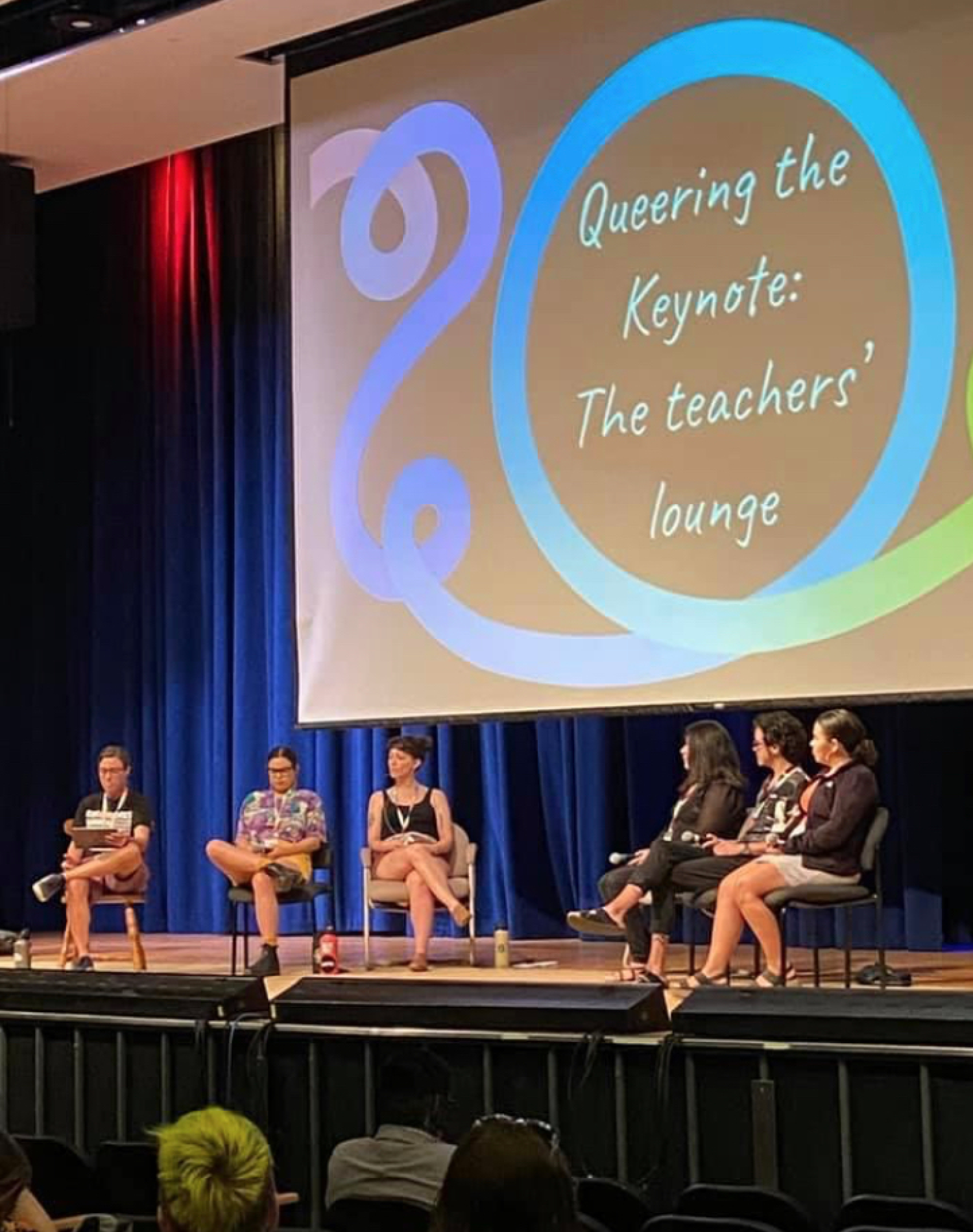
^Queering the Keynote: The Teachers’ Lounge Panel
On day 2 of the institute, we welcomed our education community by queering the keynote through our “teachers’ lounge.” Queering the keynote invited us to question and challenge ourselves by transforming the teachers’ lounge, often a toxic place, into one of promise and possibility. At the same time, the keynote, often an individual endeavor, was instead designed as a space where a group of educators had the opportunity to come together to understand ourselves as educators. As a result, we grappled and re-imagined our future teaching practice by playfully exploring and challenging our ideas with others to build new understandings and dream of the possibilities for a genuine investment in one another’s transformation toward collective liberation.
